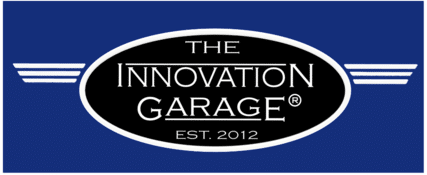
“Mission defines strategy, and strategy defines structure.” – Peter Drucker
In our years of working with so many organizations across the spectrum, we’ve come to realize that most strategic planning processes used today are, to put it kindly, not very effective.
From publicly traded organizations, automotive companies, mid market privately held, local non-profits and large scale health care, each has a “classic” strategic planning approach. Each struggles with their approach in some way. It doesn’t have to be this way.
We are asked frequently to help make it strategic planning more effective and meaningful. Not having an easy to use approach isn’t anyone’s fault per se, it’s just that we have not been taught on what makes a compelling strategy that is simple to understand. So, in this article, we want to suggest a blend of a few methods and approaches that we see great traction with.
First, we have to talk about the elements that make up a good strategy. Second, we suggest some simple methods to write it out. Lastly, we discuss where best to write it. An effective strategy needs to have 5 elements;
- A Narrative – A 3-5 sentence paragraph that describes what and why for your strategy. Start with WHY. Read more from Simon Sinek on starting with WHY. After the WHY then focus on the WHAT of the strategy.
- A Strategic Mission – A single sentence summary that communicates with clarity the WHY it’s important to do the what is described by the narrative. This is the essence of the WHY.
- Constraints – Critical as a key part of strategy is also identifying what might be holding you back. This can be funding, or lack thereof, tech, or perhaps the current skill of your team.
- Exclusions – Critical as a key part of strategy is also identifying what you will NOT do. Although it sounds easy, most of us have trouble saying no, because it’s not in our nature (or our brains) to really do so. Saying No, it a skill that you have to practice to get good at. Once you say no a few times, you’ll find out how freeing it is.
- Research & Investigation Areas – These are the areas that you want your team to explore and research possible methods, approaches, tools or technology that will help your team achieve the objective of the strategy.
Learning from our friends in the US military, they have an approach that is most effective, and it’s called commander’s intent, or sometimes commanders stated intent, abbreviated CSI. If your not familiar with it, here’s a good overview and example drawn from a very cool leadership book called Extreme Ownership, that we’ve referenced below.
- Commander’s intent is an intent describing military focused operations and it is a publicly stated description of the end-state as it relates to forces (entities, people) and terrain, the purpose of the operation, and key tasks to accomplish. It is developed by a small group, e.g. staff, and a commander.
- Commander’s intent (CSI) plays a central role in military decision making and planning. CSI acts as a basis for staffs and subordinates to develop their own plans and orders to transform thought into action, while maintaining the overall intention of their commander. The commander’s intent links the mission and concept of operations.
- It describes the end state and key tasks that, along with the mission, are the basis for subordinates’ initiative. Commanders may also use the commander’s intent to explain a broader purpose beyond that of the mission statement. The mission and the commander’s intent must be understood two echelons down.
- For a short duration mission, such as a deliberate attack, the original statement may remain valid throughout planning. But for longer phases, in order to be agile the CSI might be changing in phase with the unfolding of the situation.
“Belief in the mission ties in with the fourth Law of Combat: Decentralized Command (chapter 8). The leader must explain not just what to do, but why. It is the responsibility of the subordinate leader to reach out and ask if they do not understand. Only when leaders at all levels understand and believe in the mission can they pass that understanding and belief to their teams so that they can persevere through challenges, execute and win.” ―
Extreme Ownership: How U.S. Navy SEALs Lead and Win
The Marine Corps Association also suggests a simple flow to get clarity on your intent. It’s called Purpose, Method, End State. Articulate the purpose in a few sentences. Give high level suggestions on method. Don’t Specify the exact how to do it. Cleary Define the end state in a few sentences.
Once you have commanders intent understood, you can build a compelling strategy, that is clear, crisp, and flowing.
It’s also helpful to be in a comfortable space when you actually do your strategy work. A place where you can think and get some positive energy. The Japanese have an approach to strategic planning that comes from the view of going to visually impactful and reflective spaces for deep thinking. It’s called Yamagomori.

Yamagmori – A retreat or trip to the mountains. In Japanese corporations we work with, it refers to offsite meetings, in which strategy is developed, then presented to the team upon return.
If you can, make a trip to a quiet place. Think about your organization’s strategy and write it out there. Once you’ve outlined the five elements, write it by hand.
Wait, say again, did you say write it out by hand?
Exactly.
That’s right, no computer, no tablet, no smartphone. Put your pen to paper first. The shortest distance between the vision of what’s in your brain and what ends up on paper is the pen (or pencil) in your hand. Expect 4-6 revisions and rewrites before it truly feels right. Feeling “right” means it’s short, crisp and has a nice “flow” to it.
In summary, start with why. Use commanders intent, and if you have the opportunity to blend in the concept of Yamagomori, use your location to help amplify what you write.
We’re confident that in the blend of the three approaches, you can create something pretty meaningful. It will resonate across your organization. The strategy will be understood by senior leaders AND your operational teams.
This will, as Peter Drucker says, free your mind to create the structure and tactics needed to support the strategy. Then comes execution. Which by the way, is the hard part. So, we’ll save the topic of execution of strategy for another article.
If you are looking to get some reps on how to build strategies, that are meaningful AND align to your organization’s growth goals, here are three ways you can learn more:
Leading for Growth Webinar – 09 January 2019 12:15PM EST
Sign up and join The Innovation Garage® for this webinar to understand what it takes for your organization to create aligned & compelling strategies.
Click HERE to Register
Innovation & Growth Breakfast Session – Wednesday 23 January 2019
8:30AM-10:30AM EST
We’re back with our friends at Baldwin Wallace University’s Center for Innovation & Growth. Get together with local organization innovators to share best proactices, network and learn. In this 2 hour session, we’ll cover some basics on strategy for innovation, and share our learnings and best practices for those considering building their organizations internal capability to grow.
Click HERE to Register
Innovation 101 Workshop – Wednesday 20 Feb 2019 9:00AM-4:00PM EST
A 1 Day session that provides the basics on Innovation that will help you in your daily work. RIGHT NOW! – No matter your skill, title, or experience.
Everyone Can Innovate – NOW.
No matter your role in the organization, being more innovative means you can create, communicate, and accelerate ideas for anything. At this 1 day program workshop you’ll experience the fundamentals of the innovation necessary for creating front end ideas for products, processes, and services.
In this workshop you’ll learn the very basics on:
- How to create ideas and problem solve (with methods 8x more effective than brainstorming).
- How to communicate ideas in a way that builds them up and sells.
- How to take an idea from inspiration to reality – FAST
- MindMapping (Basics as an innovation acceleration tool)
- Innovation Basics Systems Skills (Create – Communicate – Commercialize)
- Design Thinking Introductory Skills (Empathy – Define – Ideate – Prototype – Test)
Click HERE to Register
So, Join us… and get to work on creating those strategies for your organization’s growth.
#leadership #innovation #growth
At The Innovation Garage®…We help organizations grow. We build strategy. We build ideas and coach innovation capability of teams. We design products, services and supply chains. We guide leaders from non-profit, government, startup and the Global Fortune 50 to intentionally self-disrupt their offerings and organizations. We provide world class education, tools and technology on how to craft business operating systems focused on long- term growth. To learn more visit us here ,check out our calendar of events, or reach out to us and discuss a private program for your organization.
